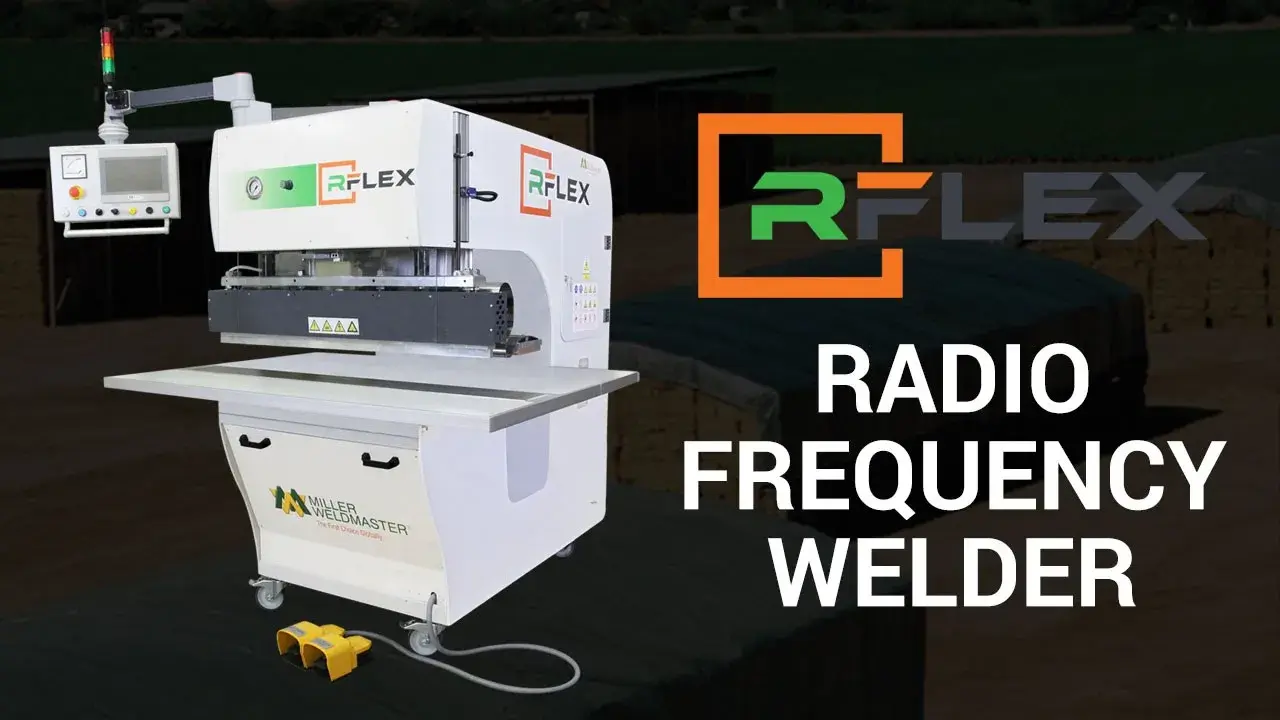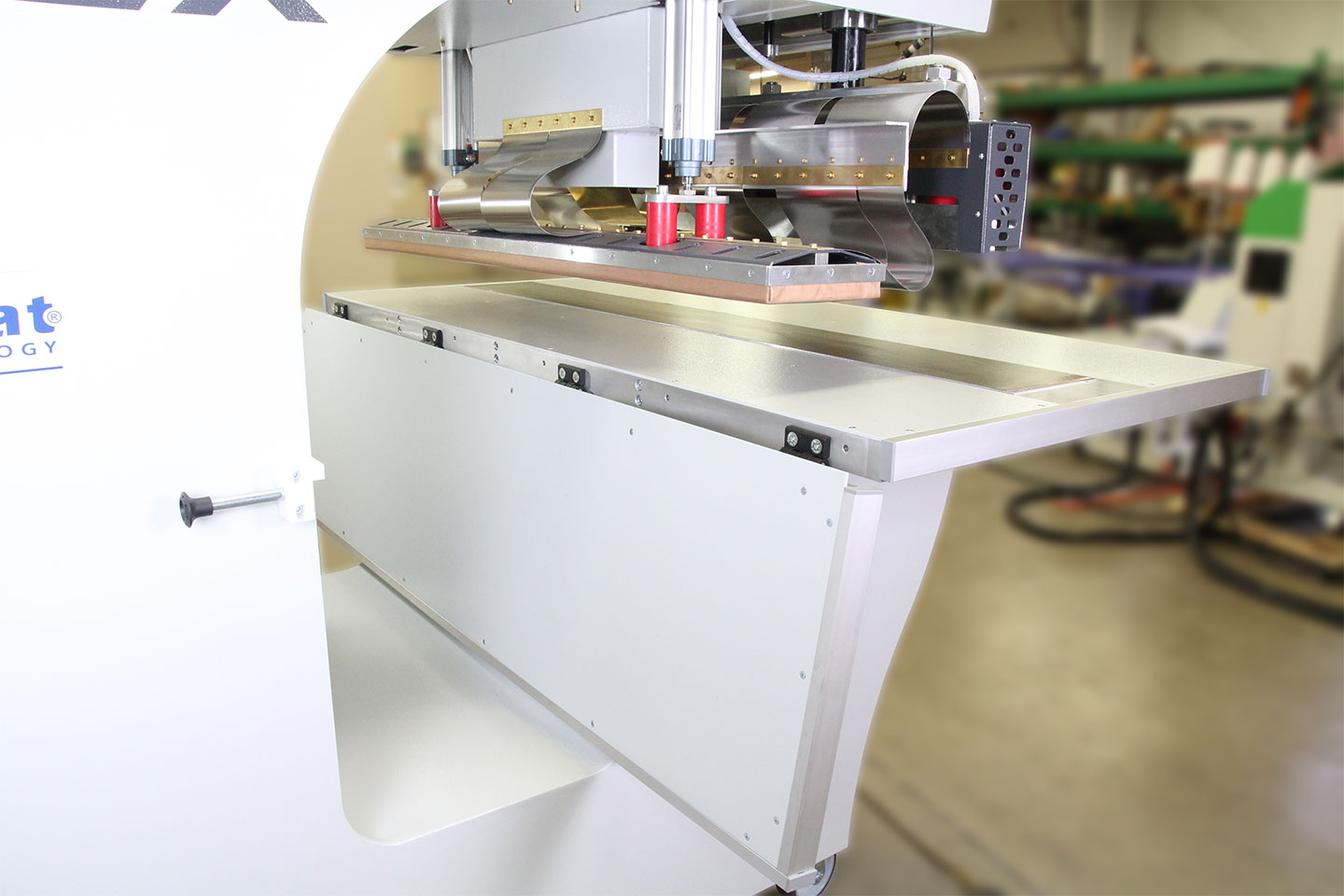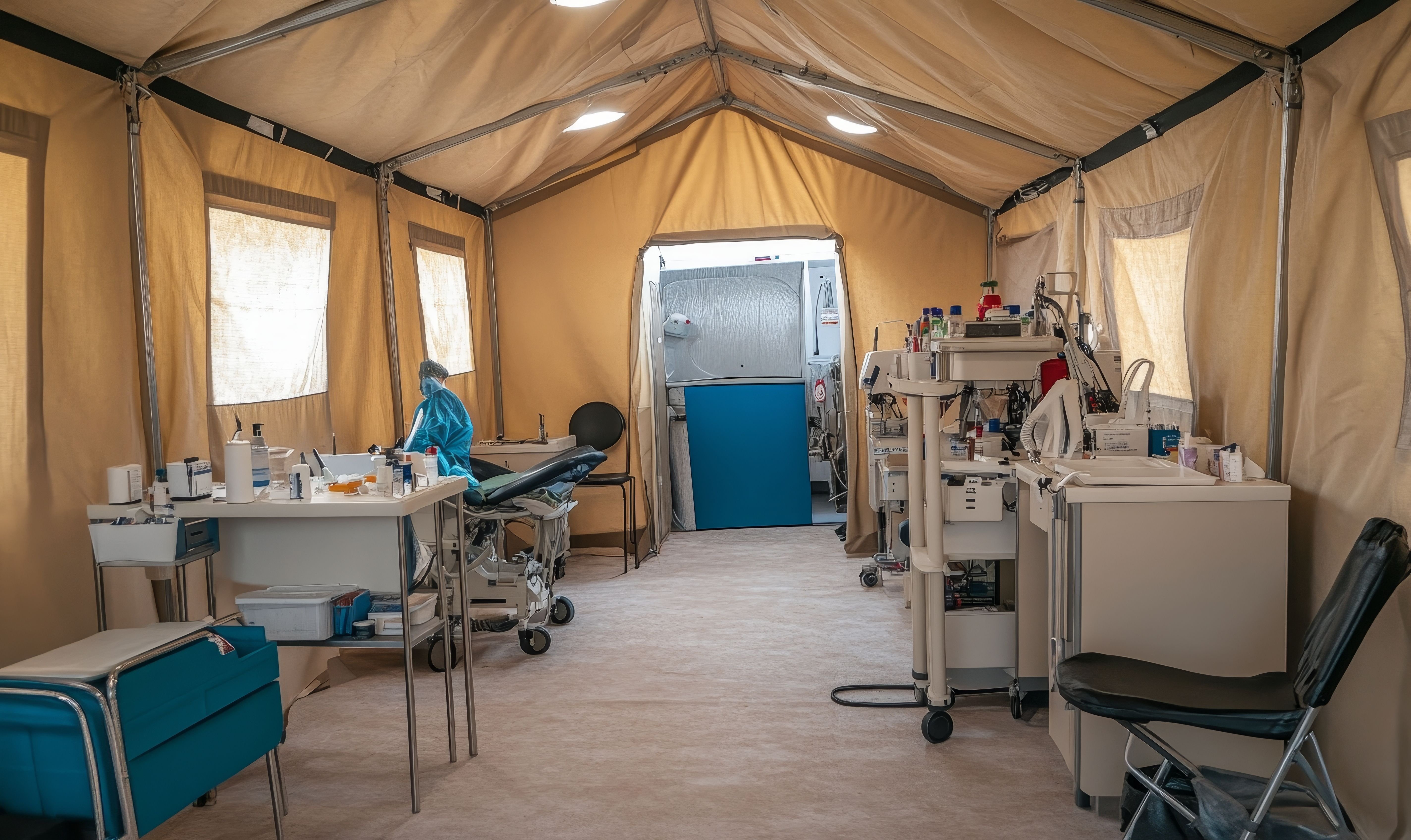In the industrial world of thermoplastic fabrication, few methods rival the precision, consistency, and durability of high-frequency welding for PVC. Whether you’re manufacturing inflatables, cleanroom curtains, or fluid containment liners, the integrity of each seam is critical. That’s where radio frequency (RF) welding stands out. RF welding delivers airtight, leak-proof seams that withstand intense pressures and environments—essential for demanding industries.
If you’re considering new welding equipment or improving your current processes, understanding RF welding, including the use of a high frequency welding machine and a plastic welding machine, can be a game-changer. In this guide, we’ll break down what RF welding is, how it works, how it compares to other methods, and why Miller Weldmaster is a trusted name in high-frequency solutions.
Learn more about RF welding technology.
What Is High-Frequency Welding for PVC?
Also known as radio frequency welding or dielectric welding, this process uses a high frequency electromagnetic field to generate heat within thermoplastic materials like PVC. Rather than applying heat externally, RF welding excites the molecules inside the material using an electromagnetic field, causing them to bond seamlessly.
This process works exceptionally well with polar plastics such as PVC (polyvinyl chloride), PU (polyurethane), and polyester variants like PET and PETG. Among these, PVC is especially ideal due to its strong molecular polarity, enabling faster, more secure welds with a high degree of reliability and minimal energy waste. The high frequency generator plays a crucial role in this process by producing the necessary radiofrequency current.
How RF Welding Works: The Basics
High-frequency welding begins when two sheets of material—typically PVC—are positioned between upper and lower electrodes of a pneumatic press. These specialized electrodes are part of a radio frequency welding machine that emits electromagnetic energy at a designated frequency. This energy causes polar molecules within the materials to rapidly oscillate, generating internal friction and heat. This phenomenon, known as dielectric heating, results in uniform melting at the weld interface without damaging the material’s surface.
Once the material reaches the desired temperature, the electrodes compress the layers together under consistent pressure. The heat combined with the pressure allows the molecules from both sheets to interlock, forming a single unified piece. After a brief cooling period—still under pressure—the material solidifies into a strong, clean seam. This entire process happens within seconds and is highly repeatable, making it ideal for high-volume manufacturing environments.
Why PVC Is Ideal for RF Welding
PVC is particularly well-suited for RF welding due to its chemical structure, which includes chlorine atoms that create a polar molecular composition, making it ideal for heating and melting plastic surfaces. These polar molecules respond effectively to electromagnetic fields, allowing plastic materials to heat uniformly and bond more thoroughly. The result is welds that are not only strong but also highly resistant to leaks, tears, and stress over time.
The high polarity of PVC ensures that RF energy is absorbed efficiently, leading to reduced power consumption and faster cycle times. This makes RF welding an energy-efficient choice, especially for operations requiring repeated, high-quality seams. Moreover, the ability to weld PVC without burning or distorting its surface preserves material aesthetics and dimensional integrity.
Advantages of High-Frequency Welding for PVC Applications
High-frequency welding delivers numerous benefits for applications where reliability and efficient operation are paramount. One of its most notable advantages is its ability to produce a completely airtight and watertight durable weld. This level of performance is essential in products where even the smallest leak could compromise safety or functionality.
RF welding also provides extremely consistent results from weld to weld. The process is controlled by programmable logic, which allows operators to fine-tune variables such as frequency, power output, weld time, and pressure. This precision minimizes human error and material waste. Another key advantage is the low level of thermal stress placed on the material. Since RF welding uses internal heating rather than direct surface heat, there is minimal risk of scorching, warping, or discoloration in the resulting weld.
Where Ultra-Strong Seams Matter Most
Seam strength is crucial in numerous industrial applications, as strong and durable weld seams are essential for maintaining integrity under stress.
In inflatable boats, tensile structures, and emergency structures, the seams must remain completely airtight even when subjected to heavy pressure and movement. Inadequate bonding can result in dangerous air loss or catastrophic failure.
Tank liners and chemical containment systems require seams that resist leaks, chemical penetration, and environmental stress. These products often operate under extreme temperature and pressure conditions, where weak seams could lead to spillage and contamination.
Cleanroom curtains, industrial partitions, and sterile medical shelters rely on seamless barriers to prevent dust, bacteria, and other contaminants from entering controlled environments. In these cases, the seams must be fully sealed, smooth, and free from pinholes or inconsistencies.
Durability and Aesthetics of RF Welded Seams
One of the distinguishing features of RF welded seams is their superior durability and invisible seams. These seams can endure prolonged exposure to UV rays, moisture, and a wide range of chemicals without deteriorating, creating a seamless joint that is strong and reliable.
From an aesthetic standpoint, RF welded seams are clean, smooth, and consistent. There are no visible stitch holes or burned edges, which is critical for consumer-facing products such as tarpaulins, banners, and tents. The seamless appearance not only improves the product’s visual appeal but also reinforces its structural reliability.
RF Welding vs. Other Welding Methods: Which Is Best for PVC?
When comparing welding methods, RF welding consistently outperforms traditional welding methods in applications that demand airtightness, seam strength, and material consistency.
However, it’s important to understand how it compares with other technologies to determine the right fit for your specific needs, especially considering the high accuracy required in industries such as automotive, aerospace, and medical device manufacturing.
When to Choose RF Over Other Welding Methods
RF welding should be your preferred process when your project involves materials like PVC or polyurethane and requires high-performance sealing. If your application demands zero air or water leakage, or if your production output must remain consistent and efficient, RF welding offers a competitive edge across various industries.
Use RF welding when dealing with thick, multi-layered materials or when aesthetics and surface quality are critical. In contrast, heat sealing or ultrasonic welding may be better suited for simpler applications, non-polar plastics, or operations with tighter budget constraints and lower performance requirements.
RF Welding Equipment: What to Look For
Investing in high-quality RF welding equipment, particularly high frequency welding equipment, involves several considerations. The machine should offer stable frequency control to maintain consistent weld strength across various materials and conditions. It should also provide flexible power output settings and adjustable machine parameters to accommodate different material thicknesses.
Automation capabilities are another important feature, especially for high-volume operations. Automated systems can manage material feed, cycle timing, and electrode positioning, allowing for faster throughput and fewer operator errors. Integrated safety controls and EMF shielding are crucial for maintaining a safe working environment.
Introduction to Miller Weldmaster’s RF Welding Solutions
Miller Weldmaster offers a range of RF welding solutions designed with cutting edge technology to meet the evolving needs of manufacturers working with PVC and other thermoplastics. Our RFlex series provides the capability to produce high-strength, airtight seams with advanced control systems and user-friendly interfaces.
Each machine is built with modularity in mind, enabling easy customization for unique workflows and product designs. Our RF welding systems integrate seamlessly into automated lines and support add-ons like edge trimming, guiding systems, and material tension controls, including automatic welding of components such as eyelets. To determine the best welding method for your business, visit our blog on selecting the right technology.
Best Practices & Safety Considerations for RF Welding
Minimizing downtime is crucial for enhancing the operational efficiency and productivity of RF welding. Following best practices ensures the safe and efficient operation of your equipment, leading to optimal performance and longevity. Operators should be well-trained in machine setup, material handling, and safety procedures to prevent accidents and ensure weld integrity.
Material Selection and Preparation Tips
To achieve high-quality welds, it’s important to select PVC materials specifically formulated for RF welding and ensure they can reach the target temperature. These materials should be clean and free from contaminants such as oils, dust, or residue, which can interfere with molecular bonding. Material preparation may include wiping with isopropyl alcohol or using specialized surface primers.
Proper alignment of materials ensures even distribution of energy and pressure during the welding cycle. Precise control of the alignment process can prevent misaligned or stretched material, which can result in weak spots, air bubbles, or incomplete fusion. Using positioning guides and tension control systems can significantly improve weld quality and efficiency.
How Miller Weldmaster Supports High-Frequency Welding Success
Miller Weldmaster stands out not only for its advanced machinery but also for its comprehensive support services that align with sustainable manufacturing practices. Our team collaborates with customers to tailor RF welding solutions to their specific application needs, highlighting how various industries benefit from our expertise. Whether you’re manufacturing flexible tanks or industrial curtains, our engineers help configure the right settings, tools, and layouts.
We also offer in-depth training programs, both onsite and remote, ensuring your team is confident in operating and maintaining RF equipment. Our global service network provides timely assistance, while our R&D capabilities support ongoing innovation. We view every customer relationship as a long-term partnership, offering tools and insights to grow and adapt with changing industry demands.
Ready to explore high-frequency welding for PVC? Reach out to our team and discover how Miller Weldmaster can support your next project with precision, durability, and confidence.

Frequently Asked Questions About High-Frequency Welding for PVC
What materials besides PVC can be RF welded?
RF welding works well with materials that have polar molecular structures, including PU materials. This includes polyurethane (PU), ethylene vinyl acetate (EVA), polyester (PET and PETG), and other materials like certain types of coated fabrics and nylons.
How strong are RF welded seams compared to sewn or hot-air welded seams?
RF welded seams often exceed the tensile strength of the base material, offering durable welds that perform superiorly under pressure. Compared to sewn seams, which can puncture the material, and hot-air seams, which may weaken at the edges, RF welds produce strong and long lasting welds that are both stronger and more reliable.
Is high-frequency welding safe for factory operators?
Yes, when used correctly, RF welding is very safe due to the controlled electromagnetic field. Machines are built with shielding, grounding, and emergency controls that protect operators from exposure to high frequency electromagnetic waves. Proper training and routine inspections enhance safety.
What types of products are best suited for RF welding?
RF welding is ideal for inflatables, tarpaulins, medical fluid bags, containment systems, signage, tents, curtains, and a wide range of industrial and consumer goods requiring airtight seams and unique shapes.
It is also highly effective for creating durable and environmentally sustainable liquid tanks for storing and transporting clean water.
Can RF welders handle thick or multi-layer PVC?
Absolutely. RF welders can be equipped with power levels and electrode configurations designed for welding multiple layers and heavy-gauge PVC materials with high precision and strength.
This capability to weld multiple layers simultaneously enhances design potential and efficiency, making it suitable for creating complex items and layered structures in various applications.
How do I know if RF welding is right for my application?
If your application involves PVC or similar polar plastics and requires airtight, watertight, or structurally robust seams, RF welding is often regarded as the preferred process due to its precision, speed, and the ability to create durable seams. This versatile method is used across various industries, including automotive, medical, and aerospace, to meet evolving demands and enhance performance.
Consult with an expert to evaluate your material and production goals.
What’s the typical maintenance required on an RF welding machine?
Routine maintenance includes cleaning electrodes, checking and calibrating frequency settings, inspecting cables and dielectric shields, and replacing worn tooling components to ensure the safe and efficient operation of RF welding machines. Preventative maintenance, along with advanced technologies like IoT features and modern equipment, can extend equipment life by minimizing downtime.
How does Miller Weldmaster support machine training and setup?
We provide in-person and remote training, initial machine setup assistance, process development support, and access to a global technical service team, all while promoting sustainable manufacturing practices. Our goal is to get your machine running at full potential as quickly as possible, ensuring that various industries benefit from our expertise.
Are RF welds visually different from other types of welds?
Yes. RF welds have a smoother, more uniform appearance with invisible seams, without discoloration, stitch marks, or burn residue. They create a seamless joint, making them often preferred for aesthetic reasons in consumer and high-visibility applications.
How fast is the RF welding process for large-volume production?
RF welding is highly efficient, ensuring high-quality products and repeatable outcomes. Automated systems can complete weld cycles in seconds, streamlining production processes to enable large-scale production with minimal waste and exceptional repeatability.




.png)
